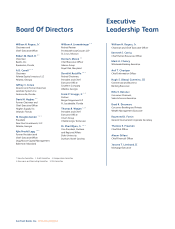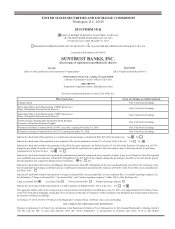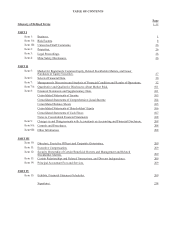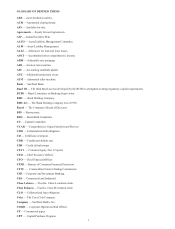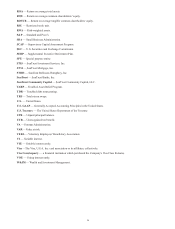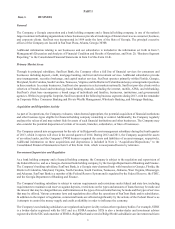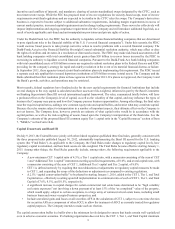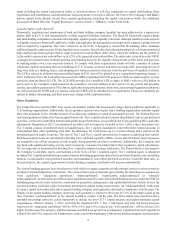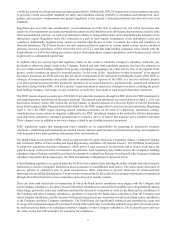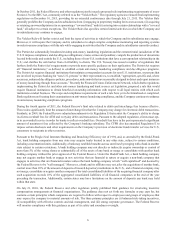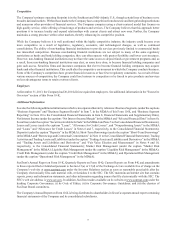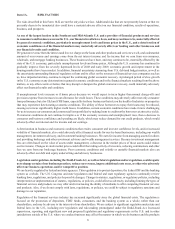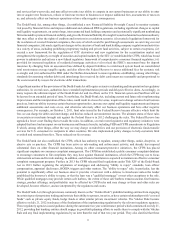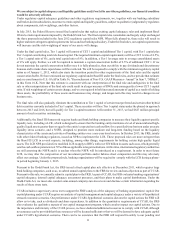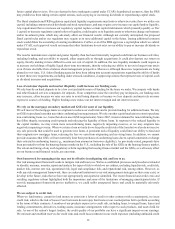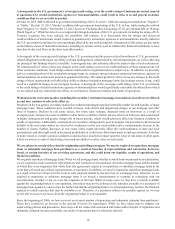SunTrust 2013 Annual Report Download - page 20
Download and view the complete annual report
Please find page 20 of the 2013 SunTrust annual report below. You can navigate through the pages in the report by either clicking on the pages listed below, or by using the keyword search tool below to find specific information within the annual report.4
ratios including the capital conservation buffer as described above, it will face constraints on capital distributions, share
repurchases and redemptions, and discretionary bonus payments to executive officers. We believe the Company's and Bank's
current capital levels already exceed these capital requirements, including the capital conservation buffer. See additional
discussion of Basel III in the "Capital Resources" section of Item 7, "MD&A," in this Form 10-K.
Liquidity Ratios under Basel III
Historically, regulation and monitoring of bank and bank holding company liquidity has been addressed as a supervisory
matter, both in the U.S. and internationally, without required formulaic measures. The Basel III framework requires banks
and bank holding companies to measure their liquidity against specific liquidity ratios that, although similar in some respects
to liquidity measures historically applied by banks and regulators for management and supervisory purposes, going forward
will be required by regulation. One ratio, referred to as the LCR, is designed to ensure that the banking entity maintains
sufficient liquidity under an acute 30-day liquidity stress scenario. Specifically, the bank must maintain a level of unencumbered
high-quality liquid assets greater than or equal to projected cash outflows under stress, where the outflows are the greater of
(i) the entity's expected net cash outflow or (ii) 25% of its expected total cash outflow. The other ratio, referred to as the NSFR,
is designed to promote more medium and long-term funding based on the liquidity characteristics of the assets and activities
of banking entities over a one-year time horizon. To comply with these requirements, banks will take a number of actions
which may include increasing their asset holdings of U.S. Treasury securities and other sovereign debt, increasing the use of
long-term debt as a funding source, and adopting new business practices that may limit the provision of liquidity to clients.
The LCR is subject to an observation period that began in 2011, but will be phased-in as a requirement beginning January 1,
2015. In October 2013, the Federal Reserve issued an NPR to implement the LCR proposal, which in certain respects is more
restrictive than the Basel III LCR. The LCR NPR provides for a modified LCR to apply to BHCs with over $50 billion in
assets such as the Company, which measures the cumulative net cash outflows at the end of a 21-day period and generally
sets the cash outflow parameters at 70% of those applicable to larger institutions. At this time, international regulatory authorities
are still assessing the NSFR and it is unclear when the NSFR will be introduced as a requirement. These new standards are
subject to further rulemaking, and their terms may change before implementation.
Other Regulation
The Federal Reserve and the FDIC have issued substantially similar risk-based and leverage capital guidelines applicable to
U.S. banking organizations. Additionally, these regulatory agencies may require that a banking organization maintain capital
above the minimum levels, whether because of its financial condition or actual or anticipated growth. The Federal Reserve
risk-based guidelines define a tier-based capital framework. Tier 1 capital includes common shareholders' equity, trust preferred
securities, certain non-controlling interests and qualifying preferred stock, less goodwill (net of any qualifying DTL) and other
adjustments. Beginning in 2013, trust preferred securities will no longer be included in Tier 1 after a three-year phase-out.
Tier 2 capital consists of preferred stock not qualifying as Tier 1 capital, mandatorily convertible debt, limited amounts of
subordinated debt, other qualifying term debt, the allowance for credit losses up to a certain amount and a portion of the
unrealized gain on equity securities. The sum of Tier 1 and Tier 2 capital represents the Company's qualifying total capital.
Risk-based capital ratios are calculated by dividing Tier 1 and total capital by RWAs. Assets and off-balance sheet exposures
are assigned to one of four categories of risk-weights, based primarily on relative credit risk. Additionally, the Company, and
any bank with significant trading activity, must incorporate a measure for market risk in their regulatory capital calculations.
The leverage ratio is determined by dividing Tier 1 capital by adjusted average total assets. The Federal Reserve also requires
the Company to calculate, report, and maintain certain levels of Tier 1 common equity. Tier 1 common equity is calculated
by taking Tier 1 capital and subtracting certain elements, including perpetual preferred stock and related surplus, non-controlling
interests in subsidiaries, trust preferred securities and mandatorily convertible preferred securities. Under the final rules, as
discussed above, the capital requirements for bank holding companies and banks will increase substantially.
The federal banking agencies have broad powers with which to require companies to take prompt corrective action to resolve
problems of insured depository institutions. The extent of these powers depends upon whether the institutions in question are
“well capitalized,” “adequately capitalized,” “undercapitalized,” “significantly undercapitalized” or “critically
undercapitalized” as such terms are defined under regulations issued by each of the federal banking agencies under the FDICIA
including progressively more restrictive constraints on operations, management, and capital distributions. Failure to meet the
capital guidelines could also subject a banking institution to capital raising requirements. An “undercapitalized” bank must
develop a capital restoration plan and its parent holding company must guarantee that bank's compliance with the plan. The
liability of the parent holding company under any such guarantee is limited to the lesser of 5.0% of the bank's assets at the
time it became “undercapitalized” or the amount needed to comply with the plan. The final capital rules described above
amended the prompt corrective action framework to include the new CET 1 capital measure and higher minimum capital
requirements, effective January 1, 2015, such that the minimum CET 1, Tier 1 risk-based, and total risk based measures
required to be “adequately capitalized” will be 4.5%, 6.0%, and 8.0%, respectively, “well-capitalized”, will be at least 2.0%
higher in each respective category, and the minimum standard leverage ratio to be adequately capitalized and well-capitalized
will be 4.0% and 5.0%, respectively. Furthermore, in the event of the bankruptcy of the parent holding company, such guarantee


